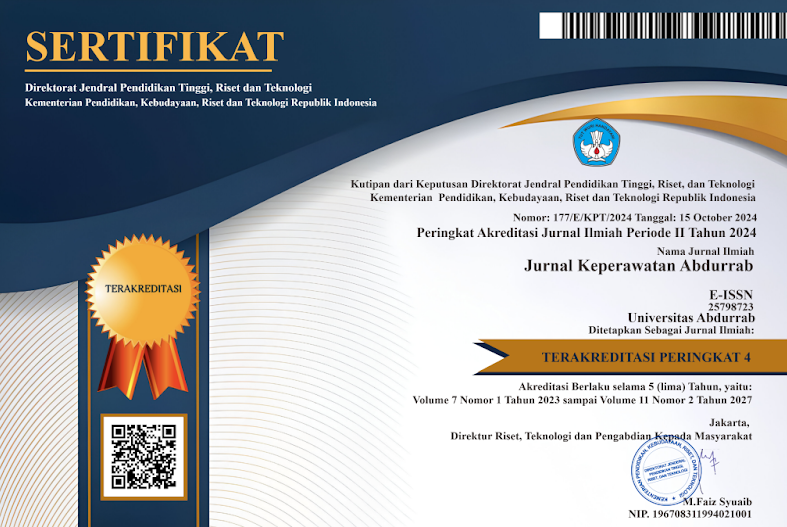HUBUNGAN MOTIVASI DENGAN KEPATUHAN PASIEN BERBEKAM DI PUSAT PENGOBATAN HOMEOPATI AL JAWAD PEKANBARU
Abstract
Cupping is classic therapy method that have been used in many treatment and therapy of various health problem such as : blood disease / illness like hemopilia and hypertension, rheumatic like arthritis, sciatica/ back pain, migren, anxiety, other general illness and mental illness (Widharto, 2007). The purpose of this research is to understand the Relationship Between Motivation and Patience’s Cupping Compliance in Al Jawad Homeopati Care Center Pekanbaru. Kind of the research is Correlation Descriptive with Cross Sectional research method. Population of the research is all patients that’s enduring cupping therapy in Al Jawad Homeopati Care Center Pekanbaru. Research was held on February 23 rd until March 13th 2015 with 118 respondences. Understanding of sample is using questioner research instrument. The data that have been collected was processing and analizing with Ms Excell computer program and statistic program (SPSS) version 17.0. Analyse of data including univariate analysis with find out frequency distribution and bivariate analysis with Chi square test (p<0.05). Research result showed from 118 respondences, partly of total have high motivation that 23 respondences (50,0%) but the cupping compliance have only 48 respondences (66,7%). Depends on that SPSS statistic-correlation test, have been discovered (p= 0.107> 0.05) so Ho was accepted and Ha was denied. Means there’s no a relationship between motivation with cupping obediences/loyalty of respondences in Al Jawad Homeopati Care Center Pekanbaru.
Downloads
Downloads
Published
Issue
Section
License
1. Copyright of all journal manuscripts is held by the Jurnal Keperawatan Abdurrab
2. Formal legal provisions to access digital articles of electronic journal are subject to the provision of the Creative Commons Attribution-ShareAlike license (CC BY-NC-SA), which means that Jurnal Keperawatan Abdurrab is rightful to keep, transfer media/format, manage in the form of databases, maintain, and publish articles.
3. Published manuscripts both printed and electronic are open access for educational, research, and library purposes. Additionally, the editorial board is not responsible for any violations of copyright law.
licensed under a Creative Commons Attribution-ShareAlike 4.0 International License.





